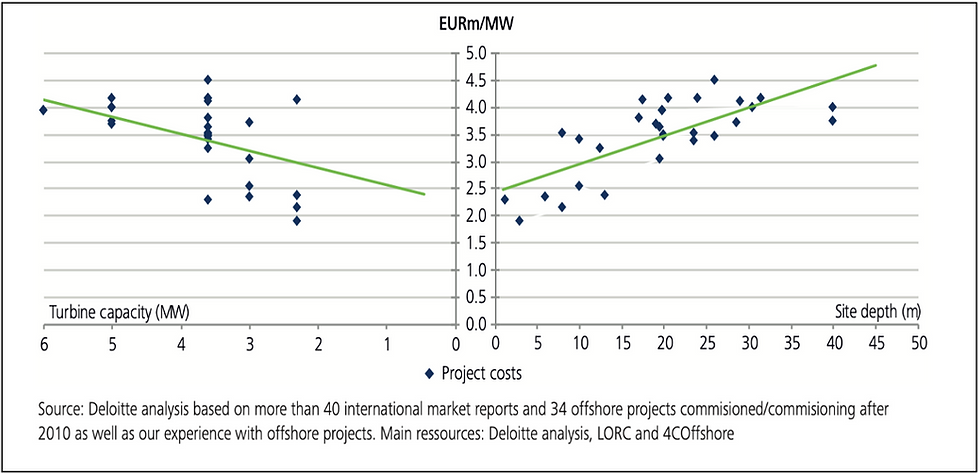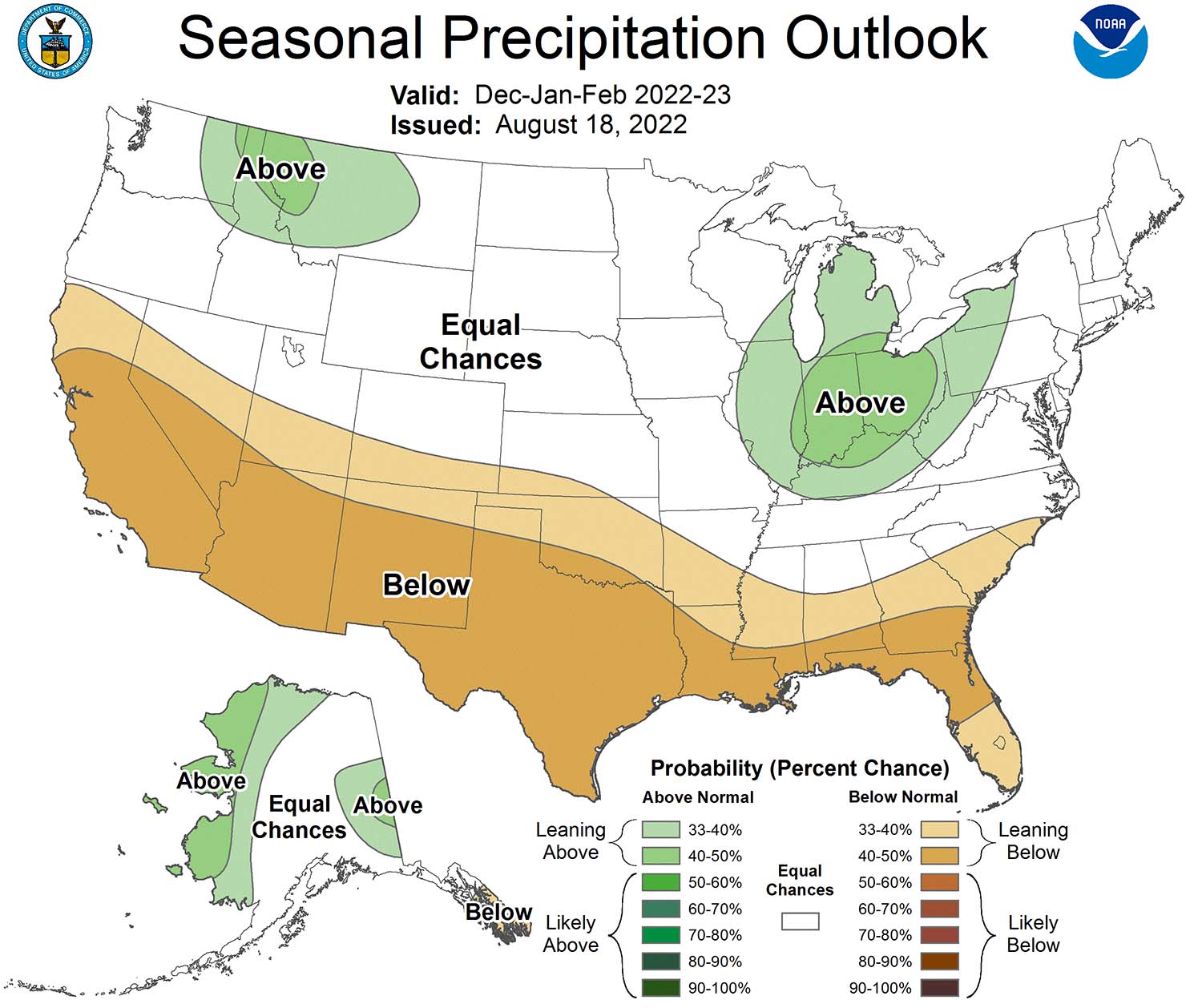Cost Concerns Hamper Growth Of Offshore Wind Energy Projects

Table of Contents
High Capital Expenditure (CAPEX) as a Major Barrier
The initial investment required for offshore wind projects, known as CAPEX, is a major barrier to entry. The sheer scale and complexity of these projects contribute significantly to these high offshore wind energy costs.
Expensive Infrastructure & Installation
Offshore wind farms are not your typical land-based wind farms. They require specialized vessels, heavy-duty equipment, and complex underwater infrastructure, driving up initial investment costs significantly.
- Specialized Vessels: The installation of massive turbines and foundations necessitates specialized vessels, such as jack-up barges, floating installation vessels, and heavy-lift cranes. These vessels are expensive to charter or own.
- Subsea Infrastructure: Laying subsea cables, installing foundations (monopiles, jackets, floating platforms), and connecting them to the turbines represents a substantial portion of the overall CAPEX. The depth and conditions of the seabed significantly impact these costs.
- Turbine Installation: Lifting and precisely placing massive turbines in often harsh marine environments requires specialized expertise and equipment, adding to the cost. Geographical location plays a crucial role; deeper waters and harsher weather conditions demand more robust and expensive solutions, increasing offshore wind energy costs even further.
Supply Chain Challenges and Material Costs
The global supply chain for offshore wind components is still developing, leading to potential delays and price volatility, impacting offshore wind energy costs.
- Material Price Volatility: The demand for specialized materials like steel, concrete, and rare earth magnets used in turbine construction and foundation materials fluctuates, impacting project budgets and creating uncertainty for developers.
- Supply Chain Bottlenecks: Delays in the supply of critical components can significantly disrupt project timelines and increase costs. This is further exacerbated by global geopolitical events and resource scarcity.
- Transportation and Logistics: The transportation and logistics of moving massive components from manufacturing facilities to the offshore installation site add considerable costs, particularly for projects located far from shore.
Operational Expenditure (OPEX) and Long-Term Maintenance
Even after the initial investment, the ongoing operational expenditure (OPEX) for offshore wind farms is substantial. This includes maintenance, repair, and grid connection costs.
Ongoing Maintenance and Repair
Offshore wind turbines are exposed to a harsh marine environment, requiring frequent inspections and repairs to ensure optimal performance and safety, thus affecting offshore wind energy costs.
- Specialized Maintenance Teams: Maintaining these turbines requires highly skilled technicians and specialized vessels capable of operating in challenging conditions. The cost of training, equipping, and deploying these teams is considerable.
- Regular Inspections: Routine inspections, often carried out by drones or specialized vessels, are necessary to identify and address potential issues before they escalate into major repairs.
- Repair Costs: Repairs to offshore wind turbines can be extremely costly, particularly if they involve replacing significant components. This requires specialized lifting and transport equipment.
Grid Connection and Transmission Costs
Connecting offshore wind farms to the onshore electricity grid involves significant infrastructure investment, contributing to the high offshore wind energy costs.
- Subsea Cable Installation: Laying high-voltage subsea cables from the offshore wind farm to the onshore grid is an expensive and complex undertaking.
- Onshore Substations: Significant investments are required to build onshore substations to receive and distribute the electricity generated by offshore wind farms.
- Grid Upgrades: In many cases, existing onshore grid infrastructure needs to be upgraded to handle the increased capacity from offshore wind farms, leading to additional expenditure.
Permitting, Regulatory Hurdles, and Environmental Impact Assessments
The regulatory landscape and environmental considerations pose further challenges that elevate offshore wind energy costs.
Lengthy Permitting Processes
Obtaining the necessary permits and approvals for offshore wind projects can be a time-consuming and costly process.
- Multiple Regulatory Agencies: Projects often require permits from multiple federal, state, and local agencies, each with its own set of requirements and review timelines.
- Environmental Reviews: Extensive environmental impact assessments are necessary to ensure the project's compliance with environmental regulations.
- Stakeholder Consultation: Public consultation and engagement with stakeholders are critical but can add time and expense to the permitting process.
Environmental Impact Studies and Mitigation
Comprehensive environmental impact assessments are mandatory and can significantly increase offshore wind energy costs.
- Marine Life Protection: Measures to protect marine mammals, birds, and fish populations are often required, increasing costs and complexity.
- Habitat Restoration: Mitigation measures, such as habitat restoration projects, can be expensive and time-consuming.
- Noise Pollution Mitigation: Reducing the impact of noise pollution from construction and operation is also essential and incurs additional expenses.
Financing and Investment Risks
The high upfront capital costs and inherent risks associated with offshore wind projects make securing financing challenging and impact offshore wind energy costs.
Securing Project Financing
Securing project financing for offshore wind farms can be difficult due to the high initial investment requirements.
- High Risk Profile: Investors perceive offshore wind projects as having a higher risk profile compared to other energy sources due to the technical complexities, environmental concerns, and regulatory uncertainties.
- Long Development Times: The long lead times involved in developing and deploying offshore wind farms increase the financial risk for investors.
- Interest Rates: The cost of borrowing money to finance offshore wind projects is influenced by prevailing interest rates in the financial markets.
Managing Project Risks
Effective risk management is crucial to mitigate potential cost overruns and delays.
- Weather Delays: Unfavorable weather conditions can cause significant delays in construction and installation, increasing costs.
- Technical Challenges: Unexpected technical difficulties during construction or operation can also lead to cost overruns.
- Insurance Premiums: Insurance premiums for offshore wind projects are high due to the inherent risks associated with these complex projects.
Conclusion
Addressing the high cost of offshore wind energy projects is crucial for unlocking the full potential of this renewable energy source. While the initial investment and ongoing operational expenditures are significant, reducing offshore wind energy costs through technological advancements, streamlined permitting processes, and efficient supply chains is essential for scaling up deployment and achieving a sustainable energy future. Investing in research and development, improving grid infrastructure, and fostering collaboration between stakeholders are key steps towards making offshore wind energy a more economically viable and globally competitive source of clean power. Let's work together to overcome these offshore wind energy costs and harness the power of the wind for a brighter future.

Featured Posts
-
 One School Desegregation Order Ends More May Follow
May 03, 2025
One School Desegregation Order Ends More May Follow
May 03, 2025 -
 Christina Aguileras New Photos Is Too Much Photoshopping Changing Her Appearance
May 03, 2025
Christina Aguileras New Photos Is Too Much Photoshopping Changing Her Appearance
May 03, 2025 -
 Joseph Tf 1 Et La Creme De La Crim Succes Et Analyse
May 03, 2025
Joseph Tf 1 Et La Creme De La Crim Succes Et Analyse
May 03, 2025 -
 1 Mayis Kocaeli Kutlamalar Ve Olaylar
May 03, 2025
1 Mayis Kocaeli Kutlamalar Ve Olaylar
May 03, 2025 -
 Tulsa Winter Weather 2024 A Statistical Overview
May 03, 2025
Tulsa Winter Weather 2024 A Statistical Overview
May 03, 2025
Latest Posts
-
 Get The Latest Winning Numbers Lotto Lotto Plus 1 Lotto Plus 2
May 03, 2025
Get The Latest Winning Numbers Lotto Lotto Plus 1 Lotto Plus 2
May 03, 2025 -
 Daily Lotto Friday 18th April 2025 Winning Numbers Announced
May 03, 2025
Daily Lotto Friday 18th April 2025 Winning Numbers Announced
May 03, 2025 -
 Wednesday April 30th 2025 Lotto Results Announced
May 03, 2025
Wednesday April 30th 2025 Lotto Results Announced
May 03, 2025 -
 View The Daily Lotto Results Thursday April 17 2025
May 03, 2025
View The Daily Lotto Results Thursday April 17 2025
May 03, 2025 -
 Latest Lotto Results Lotto Plus 1 And Lotto Plus 2 Draws
May 03, 2025
Latest Lotto Results Lotto Plus 1 And Lotto Plus 2 Draws
May 03, 2025
